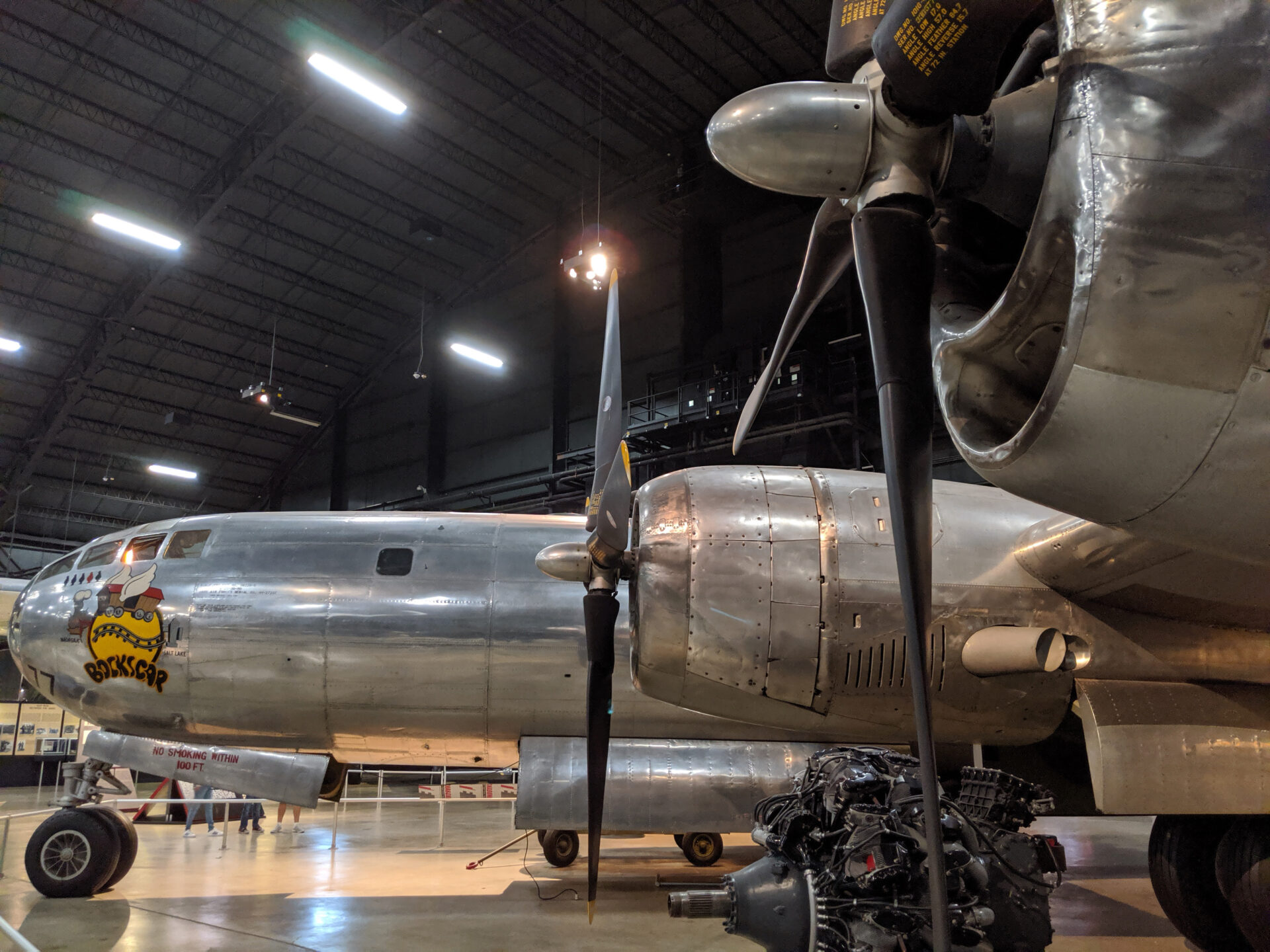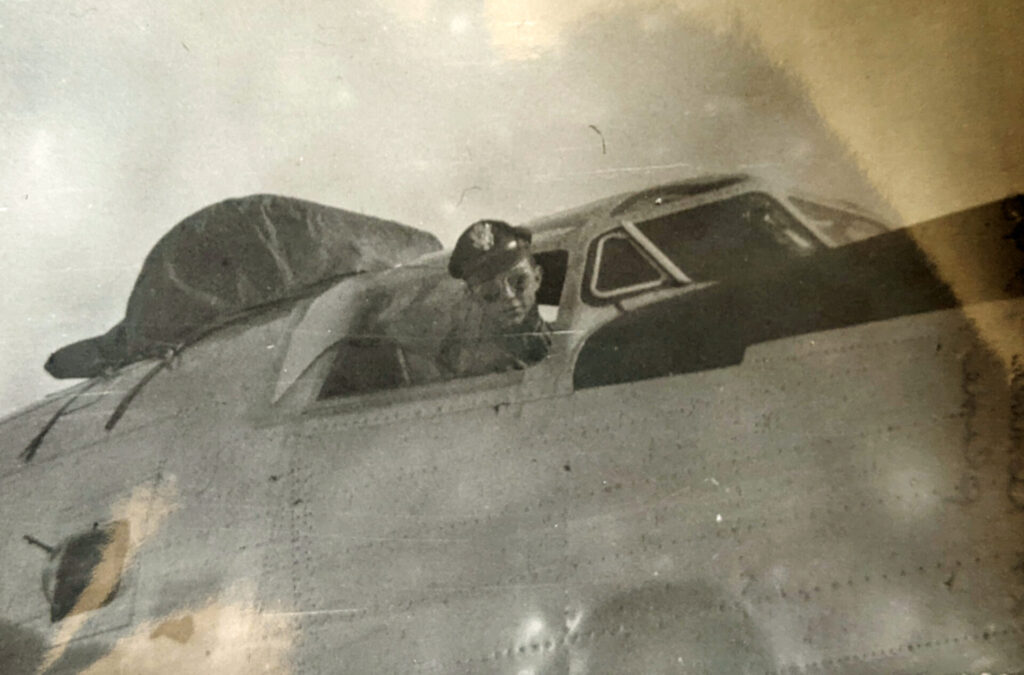
Purchase Tickets
Consider the Memoir
October 2, 2025

About five years ago, I wrote a two-part article, “So Long, Ivle,” for Connections magazine (2019–2020), featuring information from the letters of a young flight engineer who wrote to his family in southern Indiana. Ivle Lindy served on a B-29 bomber during World War II. This subject was new ground to me since I had no prior knowledge of aviation or the military. Consequently, the ensuing research process took me deep into the worlds of plane mechanics, wartime strategies and World War II history. I scoured websites, studied manuscript collections, read books and articles, talked to experts, and visited museums.
Following the article’s completion, I began another article series, “Grandfather’s Wings,” which recounted the experiences of my grandfather, Claude L. Burriss, as a World War II pilot. I expected that a project similar to the previous one would make this article easier. Instead, I ran into a completely different problem: I possessed my grandfather’s military documents but had no wartime stories from him. Therefore, when I set about researching and writing about his time in the U.S. Army Air Force, I had to use a different research approach and new sources.
My grandfather’s World War II records, including many months of flight logs, were my core resources for tracking his movements through flight training and overseas combat missions. However, his records did not answer my questions about how and why various events took place. Personal narratives from others’ wartime experiences helped to flesh out and explain some of the shifts and deviations in my grandfather’s records. Eventually, I published a four-part article series in Connections (2020–2022) about his service in World War II.

Flight log for Claude L. Burriss, April 1945, Burriss family photo
In 2024, I sat down to write an account of my research experiences for the Fall/Winter issue of Connections. In it, I discussed identifying and filling information gaps for these two articles, gathering and accessing sources, along with outlining my research, and ultimately, writing goals. Going through my notes, I realized that one resource in particular gave me experiential insight into my grandfather’s wartime activities: the memoir.
Relegated to the biography category, memoirs in general, and wartime accounts specifically, give the feeling of past events being played out in real time before the reader’s eyes. These narratives are not necessarily great works of scholarship. Rather, many of them delightfully read as if the author is dashing off his or her memories as quickly as possible, oftentimes with unguarded enthusiasm. This different approach is the great and largely untapped strength of wartime memoirs. In fact, they proved to be the key to unearthing the personal side of my grandfather’s war since his untold stories and memories passed away with him.

My grandfather’s shoulder patch, indicating that he belonged to the Fifteenth Air Force, Burriss family photo
In writing “Grandfather’s Wings,” I recognized two distinct benefits from reading memoirs. First, personal stories help interpret raw data. I found that statistics and reports do not provide the complete story. They may drive the narrative to an extent, but the reasoning behind numbers or bare facts is not always explained. For example, my grandfather successfully completed flight training, yet was given the rank of flight officer, subordinate to that of second lieutenant, which is what most pilot graduates received. While it is clear why this rank was created in 1942, the seemingly random granting of it remains a mystery. No source I consulted was able to explain who got this title while others did not. The most conclusive answer I found on this subject was from a memoir. It turns out that nobody knew the answer to this question, even during the war. Aviators had a variety of theories (sometimes bordering on the outlandish), but no one ever knew for sure. While this did not exactly answer my question, reading about the airmen’s uncertainties helped me understand their exemption from the inner workings of the military and their powerlessness to control how they were used in the war effort.

My grandfather, Claude Burriss, in an unidentified aircraft. Copilots sat on the right-hand side of the cockpit while the crew’s primary pilot and commander sat on the left, Burriss family photo
Second, these accounts gave me a glimpse of wartime life beneath the surface of baseline knowledge. History books cannot always contain high levels of detail. But the personal feelings and experiences that are so freely discussed in memoirs bring the litany of dates and statistics alive. Because of these accounts, I now have an idea of the thrill and hard work of flight training, the all-consuming dread of washing out (being cut from the flight program), and the agony of losing friends and comrades in combat and during training accidents. I also read about the awfulness of the food on overseas airbases, the pilot’s overwhelming responsibility for the lives of his crew, and the bitter cold the flight crews endured on missions, which sometimes lasted more than ten hours.
Thanks to the many men and women who freely wrote about their World War II experiences, I now have a better approximation of what my own grandfather may have seen and experienced. Although I will never know his personal thoughts and feelings on the subject, I have accounts from individuals who were in positions similar to his, laying it out for all to read.
*Hero/top image photo credit: National Museum of the United States Air Force









